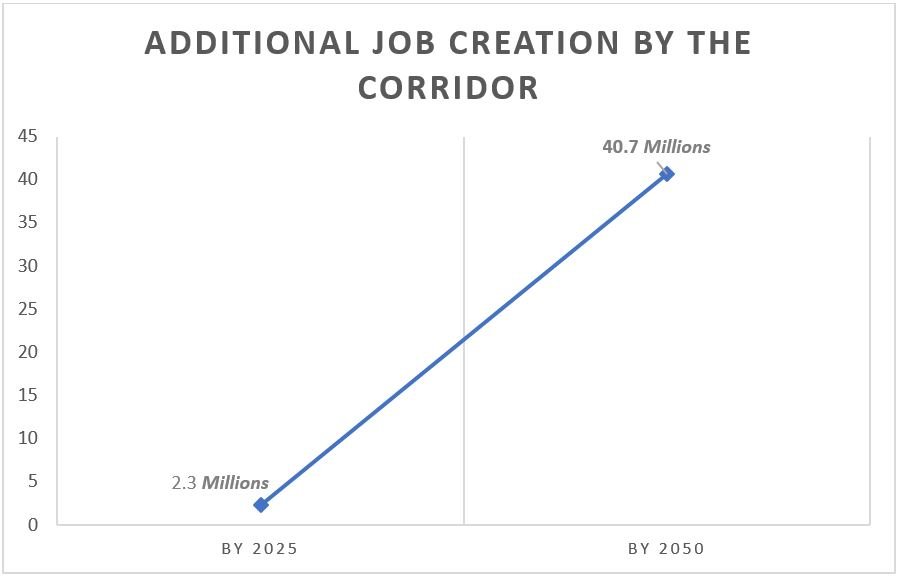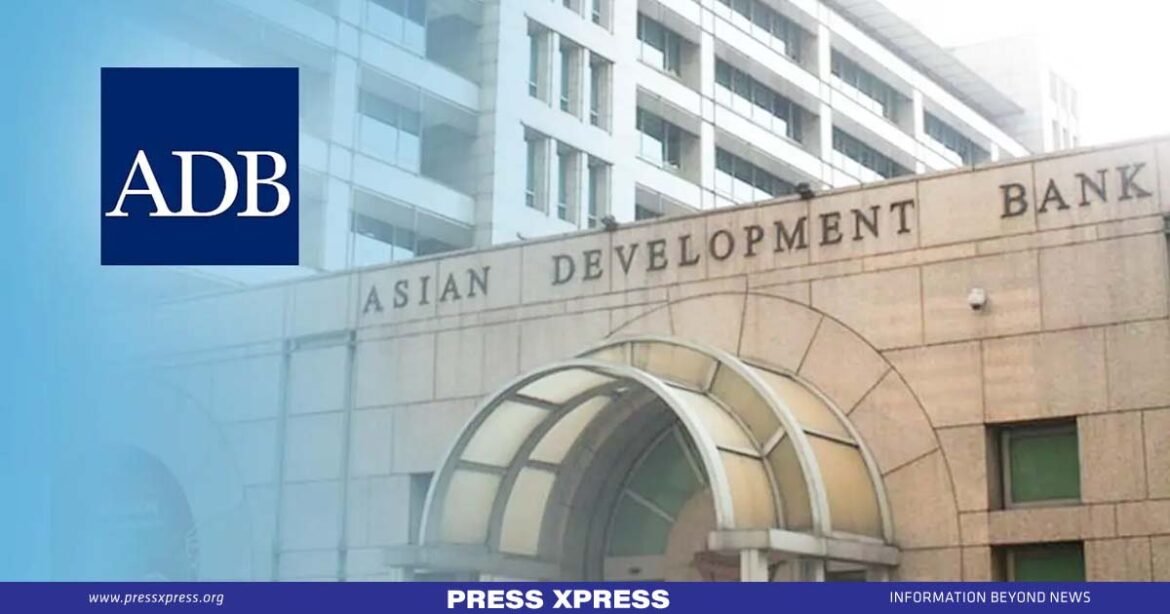In a ground-breaking revelation that promises to reshape Bangladesh’s economic landscape, the Asian Development Bank (ADB) has unveiled a visionary prospect. A strategic economic corridor spanning 14 districts could catalyse an astounding surge in economic output, propelling the nation’s GDP to a staggering $286 billion by 2050—seizing a remarkable crescendo from a modest $32 billion in 2020.
The audacious blueprint, eloquently detailed in the “Bangladesh Economic Corridor Development Highlights,” unveiled at a prestigious city hotel event, stands as a beacon of hope. The corridor is cleverly planned to go from the southwest of Khulna to the northeast where Sylhet and Mymensingh are, passing through the capital city, Dhaka.
You Can Also Read: DOUBLE CRISIS IMPACT: INFLATION AND COVID DRIVE 68 MILLION INTO POVERTY ACROSS ASIA
Not merely a fiscal metamorphosis, this visionary project also carries within its ambit the promise of livelihoods for millions. A clarion call to economic rejuvenation, the corridor is projected to spawn an astonishing 2.3 million new jobs by 2025. A crescendo of opportunity is set to resonate over the years, with an unprecedented crescendo of 40.7 million jobs anticipated to blossom by 2050—ushering in a new era of prosperity and inclusivity.
Path to collective ascent
Under the gaze of luminaries, including the distinguished Planning Minister MA Mannan, and a symphony of economists and private sector pioneers, the report emerges as a rallying cry for transformation. A revelation of paramount significance, the report delineates the pivotal role of 12 manufacturing industries in this economic corridor’s nurturing embrace—a conduit for catalysing additional economic output and kindling the flames of employment generation.
As the vibrant narrative of progress unfolds, a stark truth emerges: the current growth narrative is imbalanced, with Dhaka and Chattogram divisions reigning as focal points of prosperity. Yet, the symphony of development should resonate across every district. The districts of Khulna, Mongla, Sylhet, Rangpur, Netrokona, Sunamganj, Panchagarh, Nilphamari, and their brethren, shackled by the constraints of resources, yearn for their chance to shine.
With wisdom akin to a maestro conducting a symphony, Edimon Ginting, the ADB’s country director, illuminates the path ahead. A call for holistic strategy resonates—a clarion call to foster structural metamorphosis, casting its wings of welfare far and wide. At the epicenter of this strategy rests the transformative prowess of an economic corridor—an instrument of metamorphosis. It bequeaths the gift of infrastructure, orchestrates an industrial renaissance, dances with burgeoning employment opportunities, and, above all, bequeaths the boon of development radiating outward from the traditional epicenters.
In a harmonious convergence of vision and reality, Edimon stands poised to unleash the might of an integrated economic corridor. With profound resonance, he echoes the essence of the report’s unveiling—foretelling an epochal odyssey that transcends geographical boundaries and revitalizes every corner of this great nation. As the crescendo of development swells, Bangladesh stands on the cusp of a transformative narrative—one that promises not only economic might but also the symphony of inclusivity, progress, and collective ascent.

Economic corridor’s stellar fabric of trade
Bearing the gift of strategic location, the corridor region assumes a pivotal role in the nation’s economic narrative, endorsed by the discerning insights of the ADB report. In this tapestry of trade, eight prominent gateways weave together the fabric of commerce: from the maritime gateways of Mongla and Payra seaports, orchestrating global sea trade connections, to the terrestrial junctures of Benapole, Bhomra, Akhaura, Tamabil, Bibir Bazar, and Nakugaon land ports—constellations that foster thriving trade with India, contributing to a substantial 36% of the bilateral commerce.
This corridor region’s significance as an international trade hub unfurls eloquently, with an innate prowess for industries reliant on global trade dynamics. With an unparalleled canvas for importing raw materials and exporting refined goods, it stands as a magnet for industries seeking international resonance.
Yet, its strategic importance burgeons further. In the dance of cross-border trade, Northeast Bangladesh finds itself serenading Northeast India—a landlocked expanse clamouring for goods, aching for a $38.5 billion market. A nexus of opportunity emerges, enabling the region’s agricultural produce and industries to find a resolute consumer base across borders. In this symphony of exchange, natural resources on one side fuel industries on the other—a mutualistic harmony that galvanizes prosperity.
The corridor doesn’t confine its embrace solely to regional symphonies; it extends its welcoming hand to neighboring nations like Nepal and Bhutan. The vision is clear: to bridge gaps, transcend borders, and create a harmonious ecosystem of growth.
Yet, this isn’t merely a tale of strategic advantage—it’s a chronicle of abundance. The region boasts an opulent repository of agricultural bounty, contributing magnanimously to the nation’s fish, tea, and rice production. But that’s not all; beneath its verdant canopy lies the treasure trove of natural gas reserves, exceeding 4,000 billion cubic feet. This reservoir fuels dreams of non-metallic mineral industries and power generation, heralding an era of sustainable energy.

Battling congestion
However, the vision isn’t without its challenges, and the role of infrastructure investment stands paramount. As Planning Minister Mannan aptly underscores, the roadways and bridges of progress must traverse beyond geographical boundaries; they must traverse the fringes of the business realm, for business knows no borders. Yet, he contends, congestion threatens to impede this symphony, necessitating innovative bypass solutions.
Capacity limitations echo in the backdrop, dimming the corridor’s resplendence. Despite the promise of four functional airports, including Dhaka and Sylhet, the clamor for expansion persists, with infrastructural scarcity impeding the ascent of industries and service sectors. Agricultural dominance prevails, employing 58% of the population, as higher-paying endeavours remain encumbered.
The corridor envisions a two-phase odyssey—a saga that begins with the southwest, followed by the north-eastern ascent from Dhaka to Sylhet and Mymensingh. It encapsulates a commitment to balanced and decentralized growth, steering towards a holistic transformation.
As the symposium unfolds, a chorus of voices, including Shaikh Yusuf Harun, executive chairman of BEZA, and luminaries like Sabyasachi Mitra from the ADB, Dr. Masrur Reaz from Policy Exchange Bangladesh, and Uzma Chowdhury from PRAN-RFL Group, add their harmonies, weaving their perspectives into the tapestry of this visionary expedition. A narrative of shared aspirations, the Bangladesh Economic Corridor stands poised to rewrite the nation’s economic anthem, igniting a crescendo of prosperity, inclusivity, and harmonious progress.
Finally, unveiling a transformative vision of economic potency, the Bangladesh Economic Corridor emerges as a blueprint for propelling the nation’s north-eastern and south-western regions into an era of comprehensive and sustainable development. A symphony of potentiality, this corridor epitomizes inclusivity and progress, poised to harness the strategic advantages inherent in its geographical expanse.


